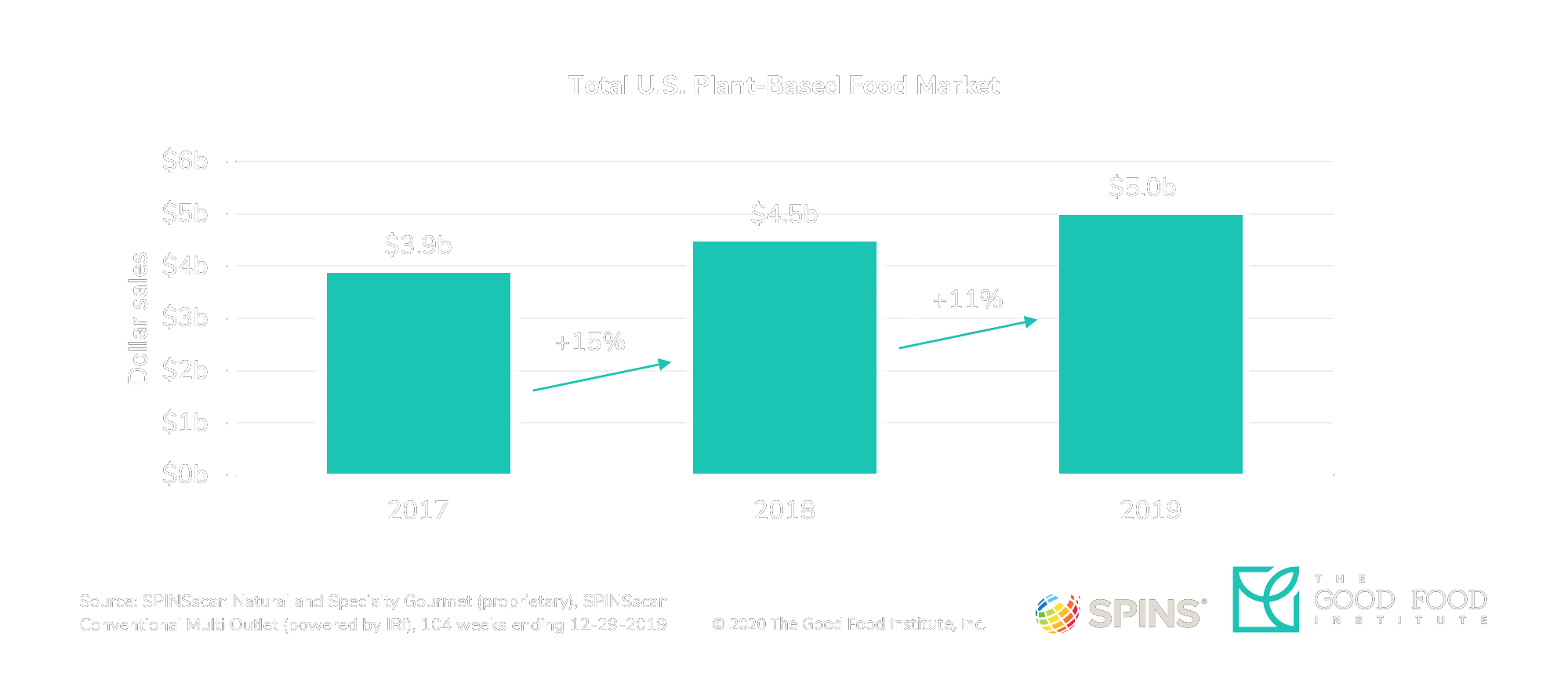Most of the sales growth in plant-based isn’t coming from vegans, vegetarians, or consumers with allergies, but from people who are reducing their animal-based protein consumption in favor of increased plant protein: flexitarians. According to Nielsen, 39% of Americans are actively trying to incorporate more plant-based foods in their diets, while Ipsos reports that 54% of consumers are trying to consume fewer animal-based foods and more plant-based foods.
Food familiarity is key for flexitarians; they might eat a plant burger one night and an animal-based burger the next night. 70% of Beyond Meat’s consumers are flexitarians, and 9 in 10 US consumers who purchase non-dairy milk also purchase dairy milk.
According to research firm Mintel’s 2017 Protein Report, 79% of millennials eat meat alternatives, with 30% eating meat alternatives every day and 50% eating meat alternatives a few times per week. 37% of Millennials plan to buy more meat alternatives next year. Having great plant meat on your menu can help you attract this vital demographic.
Restaurants face competition for dining dollars due to over-development, penny pinching by consumers, and competition from supermarkets and meal kit companies. Adding plant-based entrées can provide an important point of differentiation by adding interest to your menu, allowing for innovation, and aligning your brand with customer values around health and environmental sustainability. As plant-based entrées continue to grab press headlines and social media shares, restaurants should capitalize on this interest by offering more protein-rich, plant-based menu items.
Including plant-based menu options will appeal to consumers’ changing tastes while showing customers, investors, and employees that your company is committed to sustainability and long-term financial success.
Most of the sales growth in plant-based isn’t coming from vegans, vegetarians, or consumers with allergies, but from people who are reducing their animal-based protein consumption in favor of increased plant protein: flexitarians. According to Nielsen, 39% of Americans are actively trying to incorporate more plant-based foods in their diets, while Ipsos reports that 54% of consumers are trying to consume fewer animal-based foods and more plant-based foods.
Food familiarity is key for flexitarians; they might eat a plant burger one night and an animal-based burger the next night. 70% of Beyond Meat’s consumers are flexitarians, and 9 in 10 U.S. consumers who purchase non-dairy milk also purchase dairy milk.


According to research firm Mintel’s 2017 Protein Report, 79% of millennials eat meat alternatives, with 30% eating meat alternatives every day and 50% eating meat alternatives a few times per week. 37% of Millennials plan to buy more meat alternatives next year. Having great plant meat on your menu can help you attract this vital demographic.
Restaurants face competition for dining dollars due to over-development, penny pinching by consumers, and competition from supermarkets and meal kit companies. Adding plant-based entrées can provide an important point of differentiation by adding interest to your menu, allowing for innovation, and aligning your brand with customer values around health and environmental sustainability. As plant-based entrées continue to grab press headlines and social media shares, restaurants should capitalize on this interest by offering more protein-rich, plant-based menu items.
Including plant-based menu options will appeal to consumers’ changing tastes while showing customers, investors, and employees that your company is committed to sustainability and long-term financial success.
